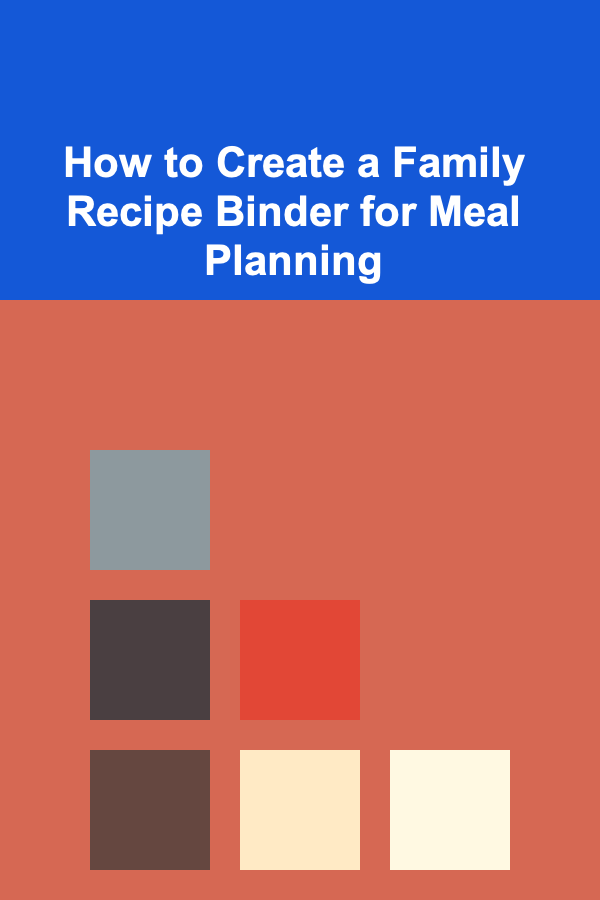
The Ultimate Guide to Mastering DIY Haircuts and Styling Like a Pro
ebook include PDF & Audio bundle (Micro Guide)
$12.99$5.99
Limited Time Offer! Order within the next:

When it comes to cutting and styling your own hair, most people imagine a total disaster --- uneven edges, awkward lengths, or a look that's more "bedhead" than "fresh trim." However, with the right tools, a bit of patience, and some knowledge, mastering DIY haircuts and styling like a pro is entirely within your reach.
Whether you're tired of paying salon prices, or simply want to embrace your inner stylist, this guide will walk you through everything you need to know to transform your haircare routine. Get ready to ditch those salon visits and take control of your look!
Understanding Your Hair Type
Before you even think about picking up a pair of scissors, it's essential to understand your hair type. This will dictate the kind of styles that suit you and how you should approach your DIY haircut.
How to Determine Your Hair Type
- Straight: Sleek and smooth with no wave or curl. This hair type tends to be versatile, but it can sometimes be hard to add volume.
- Wavy: Slight natural wave but not tight curls. Wavy hair can be slightly frizzy and may require additional styling to smooth or define the waves.
- Curly: Defined curls that may need extra moisture and definition. Curls tend to shrink, so length can be tricky to estimate.
- Coily: Tighter, smaller curls that require moisture and gentle care. It's essential to understand how shrinkage works with coily hair to avoid cutting too much.
By knowing your hair type, you can tailor your cutting and styling techniques for the best results.
The Essential Tools for DIY Haircuts
Now that you know your hair type, it's time to gather the necessary tools. A quality haircut doesn't come from using kitchen scissors or cheap razors.
What You'll Need:
- Haircutting Scissors: Invest in a pair of sharp, professional-grade scissors. Using blunt or dull scissors can cause split ends.
- Comb: A fine-toothed comb for precision parting and sectioning is essential.
- Clips: Sectioning clips will help keep your hair organized while you work.
- Cloth or Hair Cape: To keep your clothes free from hair clippings.
- Mirror: Ideally, a mirror that provides a full view of the back of your head. A hand-held mirror can help you see your progress.
- Trimming Shears (Optional): For softening and adding texture to the ends.
With these tools, you'll be ready to start cutting with precision and care.
Prep Work: The Key to a Flawless Cut
Before you even touch your hair with scissors, preparing your hair is crucial to getting a clean, professional look.
Step-by-Step Preparation:
- Clean and Dry Hair: Wash your hair beforehand. Clean hair allows you to see your natural texture and ensures an even cut. Avoid cutting wet hair unless you're working with a specific wet-cut style like a blunt bob.
- Detangle: Use a wide-tooth comb to gently detangle your hair. Knots can interfere with an even cut.
- Section Your Hair: Divide your hair into manageable sections. Typically, you'll want to create four sections --- top, bottom, left, and right --- and secure them with clips.
Cutting Techniques: The Secret to a Professional DIY Cut
Now comes the fun part: the actual cutting. This is where you'll need patience and attention to detail, but with the right techniques, you'll nail it.
Cutting Straight Hair
If you're cutting straight hair, the goal is to ensure each section is cut evenly.
- Step 1: Start with the back section. Hold a small piece of hair between your fingers, ensuring it's taut. Cut straight across.
- Step 2: Move to the next section, and repeat, matching the length of the previous cut. Work your way to the front, taking small, controlled sections.
- Step 3: Trim the ends evenly. If you prefer a blunt cut, simply cut straight across. For a layered effect, point-cut (snip into the hair with the tips of your scissors).
Cutting Wavy or Curly Hair
Wavy and curly hair can be a bit trickier due to shrinkage, so always cut less than you think you need.
- Step 1: Start with dry hair, since curly hair shrinks when it dries. Cut small sections and focus on one curl at a time to ensure accuracy.
- Step 2: If you want layers, use the "cut and curl" technique. Pinch a curl between your fingers, and gently snip the ends for a soft, layered look.
- Step 3: Trim a little at a time and step back often to check your progress. With curly hair, cutting too much can lead to uneven volume and shape.
Cutting Coily Hair
Coily hair requires careful attention, particularly when it comes to shrinkage and shape.
- Step 1: Start with clean, slightly damp hair. Avoid cutting hair that's too dry, as it will appear much shorter once it's fully dry.
- Step 2: Section off the hair and clip away sections that you aren't working on. Focus on cutting the hair gradually to preserve natural volume.
- Step 3: For a precise cut, follow the natural curl pattern to maintain structure.
The Finishing Touches: Styling Like a Pro
Once the cutting is done, it's time to style your hair like a professional. Styling can elevate a simple trim into something that looks polished and well-groomed.
Basic Styling Tips:
- Blow-Dry with Purpose: When blow-drying, always aim to blow-dry in the direction of the cut to avoid frizz and create smoothness. Use a round brush for volume or a flat brush for sleekness.
- Flat Iron or Curl: Use a flat iron for a straight, polished look, or a curling iron for defined waves or curls. Don't forget to protect your hair with heat protection spray.
- Texturize for Volume: If your hair feels too flat, use a texturizing spray or dry shampoo at the roots to add body. Tousle the hair lightly for that effortless, salon-fresh look.
- Tame the Flyaways: Use a smoothing serum or light styling cream to manage any stray hairs and keep your style intact all day.
Troubleshooting: Common DIY Haircut Mistakes and How to Fix Them
Even professionals make mistakes, and when it comes to DIY haircuts, minor errors are almost inevitable. Here's how to troubleshoot:
- Uneven Lengths: If you notice uneven sections, simply resection the hair and trim small amounts to even it out. Focus on matching the shorter side with the longer side.
- Too Short: If you've cut too much, embrace the opportunity to experiment with new styling methods or add layers to disguise the shorter lengths.
- Layering Mistakes: Layering can be tricky, especially if you're working with curly or textured hair. If you cut too much, soften the layers by adding texture with a razor or thinning shears.
Tips for Maintaining Your DIY Haircut
A DIY haircut isn't a one-and-done deal --- keeping your look fresh means regular trims and maintenance.
- Trim Every 4-6 Weeks: Keep your hair in shape by trimming the ends every few weeks to avoid split ends and keep your style sharp.
- Stay Consistent: Regularly check your hair's length and shape to ensure consistency. Small trims can help maintain a well-groomed appearance without the need for a full salon visit.
- Adapt as You Go: As your hair grows, you may need to adapt your cutting technique to suit your changing hair length and texture. Embrace the process and get comfortable with experimenting.
Final Thoughts: Embrace the DIY Journey
Mastering DIY haircuts and styling takes time, practice, and a willingness to make mistakes. But with the right tools, techniques, and a bit of self-confidence, you can achieve salon-quality results from the comfort of your own home. Don't forget to keep experimenting and fine-tuning your skills --- after all, becoming a hair pro is a journey, not a destination. Happy cutting and styling!
Reading More From Our Other Websites
- [Personal Care Tips 101] How to Choose an Eco-Friendly Toothbrush
- [Personal Care Tips 101] How to Choose Hair Gel with Eco-friendly Ingredients for Sustainable Beauty
- [Home Space Saving 101] How to Maximize Storage in Your Bedroom with Built-In Solutions
- [Personal Investment 101] How to Start Investing in Bonds: A Beginner's Guide
- [Home Storage Solution 101] How to Organize Your Home Bar Area with Space-Saving Ideas
- [Organization Tip 101] How to Create a Meal Prep Community for Support
- [Personal Finance Management 101] How to Save Money While Traveling Without Sacrificing Experience
- [Home Storage Solution 101] How to Design a Functional Mudroom with Adequate Storage
- [Home Storage Solution 101] How to Make the Most of Shelf Organization: Tips for Every Room
- [Survival Kit 101] The Ultimate Survival Kit for Urban Homesteaders Growing Food on Rooftop Gardens

How to Capture Memories: The Best Photography Tips for Reunions
Read More
How to Create a Family Recipe Binder for Meal Planning
Read More
How To Make Coffee-Based Sauces and Glazes
Read More
Understanding the Geology of Hiking Trails
Read More
10 Tips for Designing a Dance Class Warm-Up Routine
Read More
10 Tips for Using Color Psychology in Your Graphic Design Planner
Read MoreOther Products

How to Capture Memories: The Best Photography Tips for Reunions
Read More
How to Create a Family Recipe Binder for Meal Planning
Read More
How To Make Coffee-Based Sauces and Glazes
Read More
Understanding the Geology of Hiking Trails
Read More
10 Tips for Designing a Dance Class Warm-Up Routine
Read More